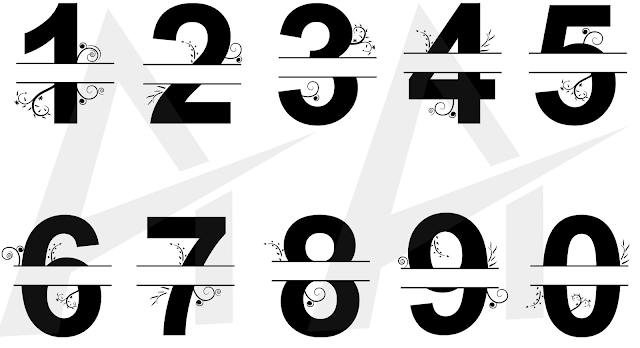SMI (Split, Multiply, Iterate)
The SMI
operation is based on the “persistence of a number” idea:
See also:
Here, we
always split the integer N into two integers, then multiply them (and iterate).
2023 can
thus be split into 20 and 23 (producing 20*23 = 460), or split into 202 and 3
(producing 202*3 = 606).
The
split 2 and 023 is forbidden, as 023 is not an integer (but 460 can be split
into 46 and 0 as 0 is an integer).
To
explore the SMI operation, my friend Nicolas Graner has built this
(wonderful) tool:
This tool
explains how I “computed” the hereunder sequences.
All
typos, mistakes, errors, omissions… are my fault and not that of Nicolas'
engine.
Numbers
reaching 0:
SMI0
= 0,10,20,25,30,40,45,50,52,54,55,56,58,59,60,65,69,70,78,80,85,87,90,95,96,100,101,102,103,104,105,106,107,108,109,110,115,…
We see that
115 reaches 0 when split into 11*5:
11*5 =
55 –> 5*5 = 25 –> 2*5 = 10 –> 1*0 = 0
We see
also that 115 reaches 5 when split into 1*15:
1*15 =
15 –> 1*5 = 5.
The integer
115 will therefore belong to the two sequences, SMI0 and SMI5.
Numbers
reaching 1:
SMI1
= 1,11,111,337,373,1111,1337,1373,2393,2771,3169,3371,3639,3713,3731,4191,5319,5337,5919,5939,5981,6393,6931,7127,…
Numbers
reaching 2:
SMI2
= 2,12,21,26,34,37,43,62,73,112,121,126,132,137,143,148,149,162,167,172,173,187,189,211,213,216,217,219,226,231,249,…
Numbers
reaching 3:
SMI3
= 3,13,31,113,131,311,1113,1131,1311,1387,1597,1969,1973,2153,2357,2939,3111,3371,3377,3437,3713,3773,3929,4373,…
Numbers
reaching 4:
SMI4
= 4,14,22,27,39,41,72,89,93,98,112,114,122,126,127,133,139,141;147,148,149,167,172,184,187,189,193,196,197,198,211,216,217,219,…
Numbers
reaching 5:
SMI5
= 5,15,35,51,53,57,75,115,135,151,153,155,157,159,173,175,179,193,235,253,257,275,315,317,319,325,345,351,353,355,359,399,…
We see
that 115 is present in SMI5, as mentioned above in SMI0.
Numbers
reaching 6:
SMI6
= 6,16,23,28,32,44,47,48,61,74,82,84,86,114,116,123,124,127,128,132,142,144,146,147,148,161,162,163,168,169,174,182,184,186,188,189,196,…
Numbers
reaching 7:
SMI7
= 7,17,71,117,139,171,339,357,393,517,573,751,799,913,919,979,1117,1133,1139,1147,1171,1183,1189,1193,1199,1313,1339,1357,1391,…
Numbers
reaching 8:
SMI8
= 8,18,24,29,36,38,42,46,49,63,64,66,67,76,77,79,81,83,88,92,94,97,99,116,117,118,119,122,123,124,129,136,138,139,142,143,146,149,163,164,…
Numbers
reaching 9:
SMI9
= 9,19,33,91,113,119,133,137,177,191,197,311,359,593,713,717,719,1113,1119,1131,1133,1137,1177,1191,1197,1311,1331,1339,1359,1371,1387,1519,1593,...
Numbers
that do not reach any of their digits:
SMIx
= 22,23,24,25,27,28,29,32,33,34,36,37,39,42,43,44,45,46,47,48,49,52,54,55,56,58,59,63,64,65,66,67,69,72,73,74,76,77,78,79,82,84,85,87,89,92,93,94,95,96,97,98,99,122,123,124,125,127,…
We see
for instance that 127 reaches 4 when split 1*27 = 27 –> 2*7 = 14 –> 1*4 =
4 and reaches 6 when split 12*7 = 84 –> 8*4 = 32 –> 3*2 = 6; neither 4 nor
6 are present in 127.
Question (a):
Is the
sequence SMIx finite? If yes, what is its last integer?
Numbers
that reach at least all
their digits:
SMIall
= 0,1,2,3,4,5,6,7,8,9,11,88,111,266,…
88 is in
the sequence because 8*8=64 –> 6*4=24 –> 2*4=8
266 is in
the sequence because 2*66=132 –> 1*32=32 –>3*2=6 and 2*66=132 –> 13*2=26
–> 2*6=12 –> 1*2=2; task completed, we have reached 2 and 6.
We have
also 26*6=156 –> 1*56 = 56 – 5*6=30 –> 3*0=0 and 26*6=156 –> 15*6=90
–> 9*0=0, but those extra 0s do not prevent 266 from performing the
requested task.
Numbers
> 99 that reach one and only
one digit:
SMIonly1
= 100,101,102,103,104,105,106,107,108,109,110,111,118,120,121,125,130,131,140,141,145,150,151,152,154,156,158,160,161,164,165,170,171,174,180,181,185,190,191,192,194,195,…
Question (b):
Is the
sequence SMIonly1 finite? If yes, what is its last integer?
Numbers
that reach at least each of the five even digits 0, 2, 4, 6 and 8:
SMIeven
= 387,389,439,479,619,627,649,661,688,696,719,739,742,784,788,824,827,847,862,868,878,879,886,887,889,898,914,924,929,938,943,947,966,969,973,979,982,988,996,998,1038,…
Here are for example the successive splits allowing the above 719 to reach all the even digits:
719 –> 71*9=639
–> 63*9=567 –> 5*67=335 –> 3*35=105 –> 10*5=50 –> 5*0=0
719 –> 71*9=639
–> 63*9=567 –> 56*7=392 –> 3*92=276 –> 27*6=162 –> 1*62=62 –>
6*2=12 –> 1*2=2
719 –> 7*19=133
–> 13*3=39 –> 3*9=27 –>
2*7=14 –> 1*4 = 4
719 –> 71*9=639
–> 6*39=234 –> 2*34=68 –> 6*8=48
–> 4*8=32 –> 3*2=6
719 –> 71*9=639
–> 6*39=234 –> 23*4=92 –> 9*2=18 –> 1*8=8
719 also reaches the
digit 9:
719 –> 7*19=133 –> 1*33=33 –> 3*3=9
The full “ordinated”
split-graph of 719 would look like this:
The
graph shows indeed a simple method to order the successive splits:
– when possible,
always split after the first digit of N;
–
iterate until a single digit is reached;
– go
back to the last split and see if there is a possible split after the second
digit of N; if yes, iterate like before;
– go
back to the penultimate split and see if there is a possible split after the
third digit of N; if yes, etc.
This
method allows you to associate a specific character string with each number (in
the above example, we associate to 719 the string 946800000260).
Question (c):
– is 719
the smallest integer linked to the string 946800000260?
– if
yes, what is the next integer linked to the same string?
Numbers
that reach all the digits from 0 to 9
SMIall
= 17117,17727,17749,18839,19933,21761,22777,29391,30397,31157,31317,31643,33949,34199,35909,39723,39789,39797,39803,39813,42973,…
Numbers
a(n) reaching at least one of the digits of a(n-1), starting the sequence with a(1)=1:
SMIbefore
= 1,11,111,337,3,13,113,131,311,373,7,17,71,117,139,9,19,33,1113,1111,1337,171,339,91,119,133,1131,1311,1373,357,5,15,35,51,53,57,75,115,135,151,153,155,157,159,173,…
The
sequence SMIbefore must have an interesting graph, I guess.






Commentaires
Enregistrer un commentaire